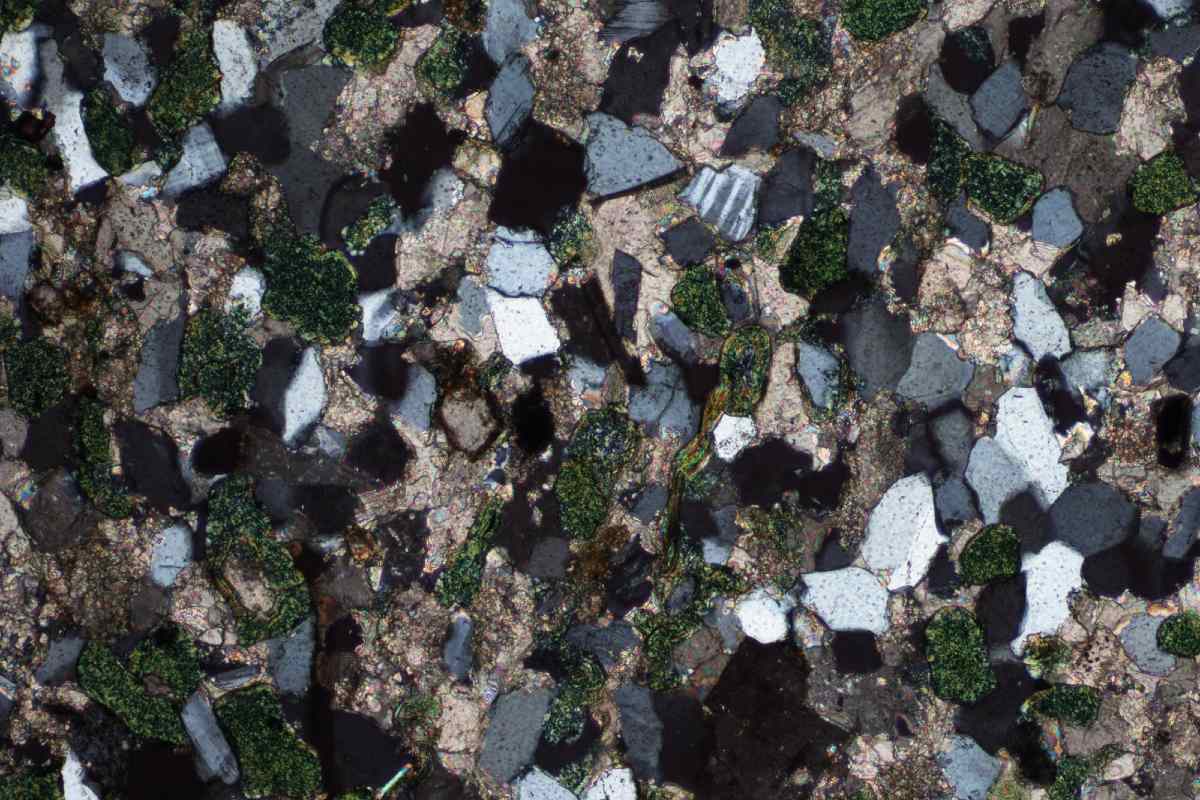
Using thousands of high resolution photos like this, members of the University of Alberta’s Department of Earth and Atmospheric Sciences, including Igor Jakab, Marilyn Huff, and Pilar Lecumberri-Sanchez, have developed an interactive tool for teaching microscopy online.
A critical part of learning geology is looking at rock samples under the microscope—and an innovative new tool by University of Alberta scientists is allowing students to carry out this critical component of their education online.
Using thousands of high resolution photos, members of the University of Alberta’s Department of Earth and Atmospheric Sciences, including Igor Jakab, Marilyn Huff, and Pilar Lecumberri-Sanchez, have developed an interactive tool for teaching microscopy online.
In person, Lecumberri-Sanchez can show evidence of how mineral deposits form by using a microscope. But when the COVID-19 pandemic forced classes to move online, instructors had to adapt.
“I didn’t want my students to lose out on that aspect of learning, no matter what happens with COVID-19,” explained Lecumberri-Sanchez, assistant professor in the Department of Earth and Atmospheric Sciences and project lead.
“So, over the last few months, we have been working to create an online interface through which students can learn microscopy and uploading a comprehensive teaching collection. In terms of learning the practical skills taught in my courses, students will have readily access to the same material they would in a microscopy lab through the online interface.”
Curious to see how it works? Check out some examples.
The interface includes a wide variety of rock samples— currently two courses’ worth, to be precise. “Using the tool, students can zoom in on different sections to examine the properties of the rock sample,” said Lecumberri-Sanchez. “They can manipulate the samples the same way they would when using a microscope—for example, rotating the stage magnifying certain aspects or using different types of light.”
An individual sample can include more than 700 images, allowing students to examine them from various directions and magnifications. Combined, the tool uses thousands of images to allow students to manipulate samples and learn the techniques of microscopy remotely. The bulk of the images were taken by Cole Graham, an undergraduate student in Lecumberri-Sanchez’s lab.
“Students can identify the samples, provide textural descriptions, and determine how the rocks formed—all the same way that we would normally do with a microscope,” added Lecumberri-Sanchez. “While students aren’t using the microscope hands-on, they’re able to examine samples much like they would if they were in the lab. ”
Long-term vision
Lecumberri-Sanchez sees many potential benefits of the tool in the long run, including using the interface as a supplementary resource for in-person labs as well as improving accessibility.
“There are many possibilities using this tool in the long-term,” she said. “I see this as a win-win situation. Having accessibility for everyone is very important in terms of diversity and inclusivity. Doing this work to move to remote teaching is something that, in the long-run, may help us recruit people from all backgrounds, which results in stronger science.”
The global COVID-19 pandemic has required a mass migration to the digital world, and post-secondary learning is no exception. The University of Alberta is delivering course content primarily remotely in the Fall 2020. While delivery may look different, what remains the same is our strong commitment to an engaging and quality education and experience for our students.
“Like anything, there will be some things that are more challenging with remote learning, and simultaneously, there will be some things that are even better than in-person,” added Lecumberri-Sanchez. “Every time you try something new there are advantages and disadvantages. We’ll figure out and overcome the things that don’t work as well, and we’ll enjoy the things that work even better.”
Learn more about campus life at the University of Alberta in the 2020/21 academic year.